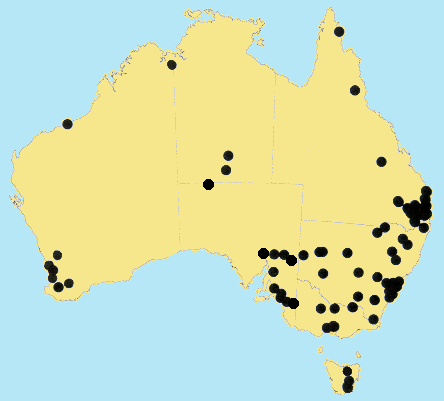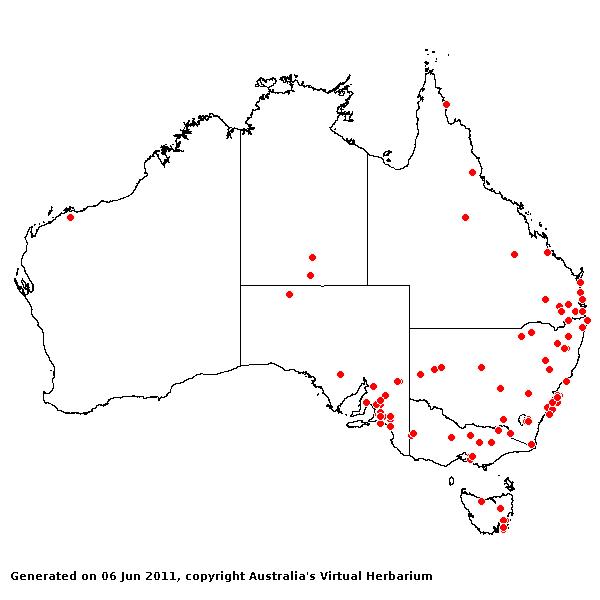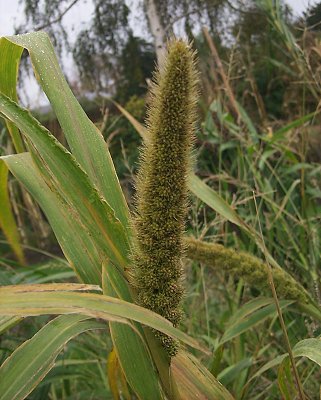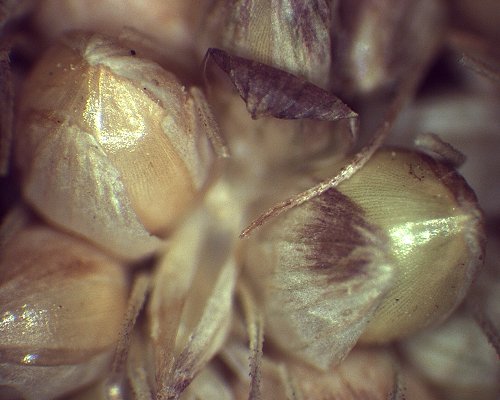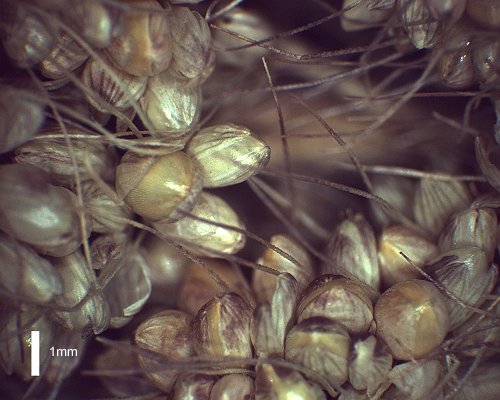Setaria italica* (L.) Beauv. Ess.
Agrost. 51, 170,
178 (1812).
Classification. (GPWG 2001) : Subfamily
Panicoideae. Paniceae.
Basionym and/or
Replacement Name: Panicum
italicum L., Sp.Pl. 1: 56 (1753).
Type of Basionym or
Protologue Information: LT: Herb A van Royen, (L-912.356–242). LT
designated by Veldkamp in Cafferty et al., Taxon 49(2): 253 (2000). LT: India
(LINN-80.14). LT designated by Sherif & Siddiqui, Fl. Libya 145: 298 (1988), but this
lectotypification is ineffective because the cited specimen is not original
material [fide Cafferty et al., Taxon 49(2): 250 (2000)].
Key references
(books and floras): [1810]. R.Brown, Prodromus (195 as Pennisetum),
[1952] C.A.Gardner, Flora of Western Australia 1 Gramineae (267),
[2002] D.Sharp & B.K.Simon, AusGrass, Grasses of Australia, [2006]
J.Jessop, G.R.M.Dashorst, F.M.James, Grasses of South Australia (480),
[2008] S.W.L.Jacobs, R.D.B.Walley & D.J.B.Wheeler, Grasses of New South
Wales (369).
Illustrations:
[2006] J.Jessop, G.R.M.Dashorst, F.M.James, Grasses of South Australia (481, fig. 413), [2008] S.W.L.Jacobs,
R.D.B.Whalley & D.J.B.Wheeler, Grasses of New South Wales, 4th edn
(369).
Habit. Annual.
Rhizomes absent. Culms erect or geniculately ascending, stature robust to
moderate, 30–150 cm tall, 5–7 -noded. Mid-culm nodes glabrous. Ligule a fringe
of hairs. Leaf-blades flat, 8–45 cm long, 5–20 mm wide. Leaf-blade surface
scaberulous or scabrous, glabrous.
Inflorescence.
Inflorescence solid, a panicle. Panicle linear or oblong, 5–30 cm long, 0.8–2.4
cm wide.
Spikelets.
Spikelets sessile and pedicelled, 2–4 in the cluster. Involucre composed of
bristles. Fertile spikelets 2-flowered, the lower floret barren (rarely male),
the upper fertile, comprising 1 basal sterile florets, comprising 1 fertile
floret(s), without rachilla extension, elliptic, dorsally compressed, 2–3 mm
long.
Glumes. Glumes
thinner than fertile lemma. Lower glume ovate, hyaline or membranous, without
keels, 1–3 -nerved. Upper glume elliptic, 2.1–2.8 mm long, membranous, without
keels, 5–7 -nerved. Florets. Basal sterile florets 1, barren, without
significant palea. Lemma of lower sterile floret 100 % of length of spikelet,
membranous, 5 -nerved.
Fertile lemma 2–3 mm
long, without keel. Lemma apex mucronate. Anthers 3. Grain 1.5–2 mm long.
Continental
Distribution: Europe, Africa, Temperate Asia, Tropical Asia, Australasia,
Pacific, North America, and South America.
Australian
Distribution: Western Australia, Northern Territory, South Australia,
Queensland, New South Wales, Victoria, Tasmania.
Western
Australia: Gardner.
Fortescue. Drummond, Dale, Menzies, Avon. Northern Territory: Central
Australia South. South Australia: North-western,
Gairdner-Torrens Basin, Flinders Ranges, Eastern, Northern Lofty, Murray,
Southern Lofty, South-eastern. Queensland:
Darling Downs, Moreton, North Kennedy, Wide Bay,
Leichhardt. New South Wales: Central Coast, Northern Tablelands, Central
Tablelands, Southern Tablelands, North-Western Slopes, South-Western Slopes,
North-Western Plains, South-Western Plains, North Far Western Plains. Victoria: Gippsland Plain, Midlands,
Riverina, Volcanic Plain. Tasmania: Midlands, East Coast.
Notes.
Although recognized as a species, S. italica seems to be a cultivated
form of S. viridis. The point of disarticulation (below the glumes in S.
viridis and above in S. italica) is used to separate the species.
In tropical and
subtropical rain forests, tropical and subtropical wet sclerophyll forests, dry
sclerophyll forests, Brigalow forests, tropical and subtropical sub-humid
woodlands, and semi-arid shrub woodlands. Flowers mostly Jan.-May.
